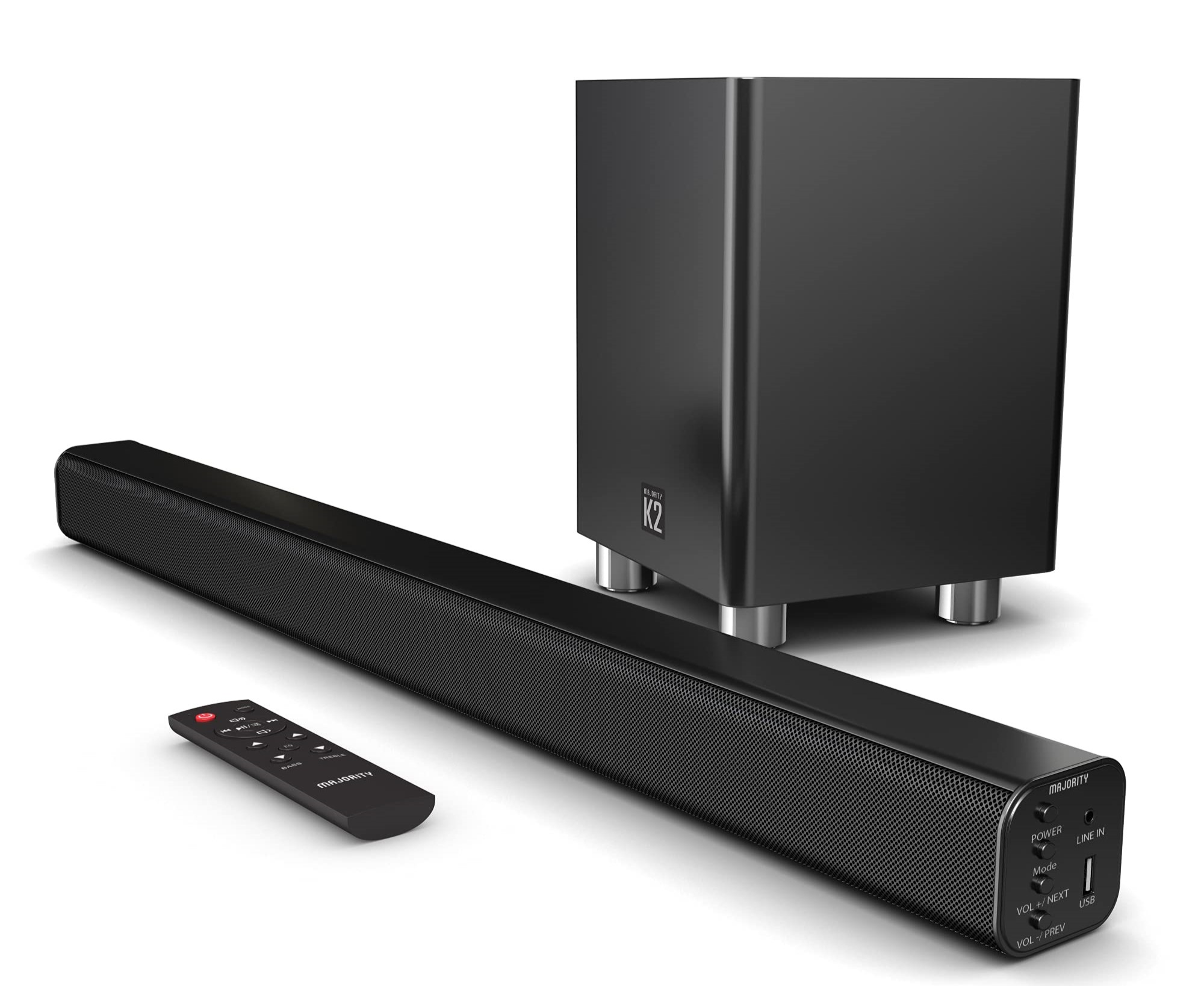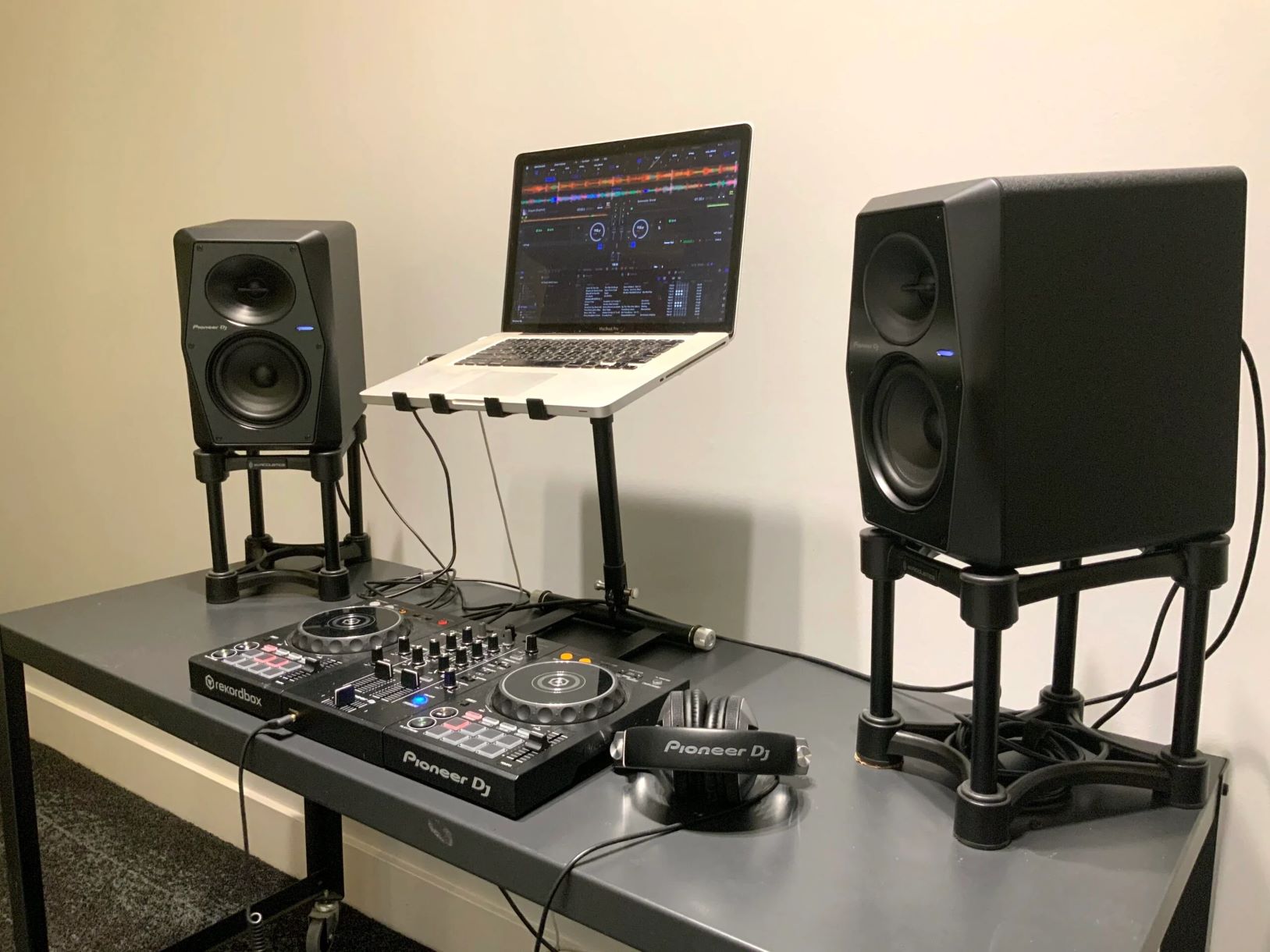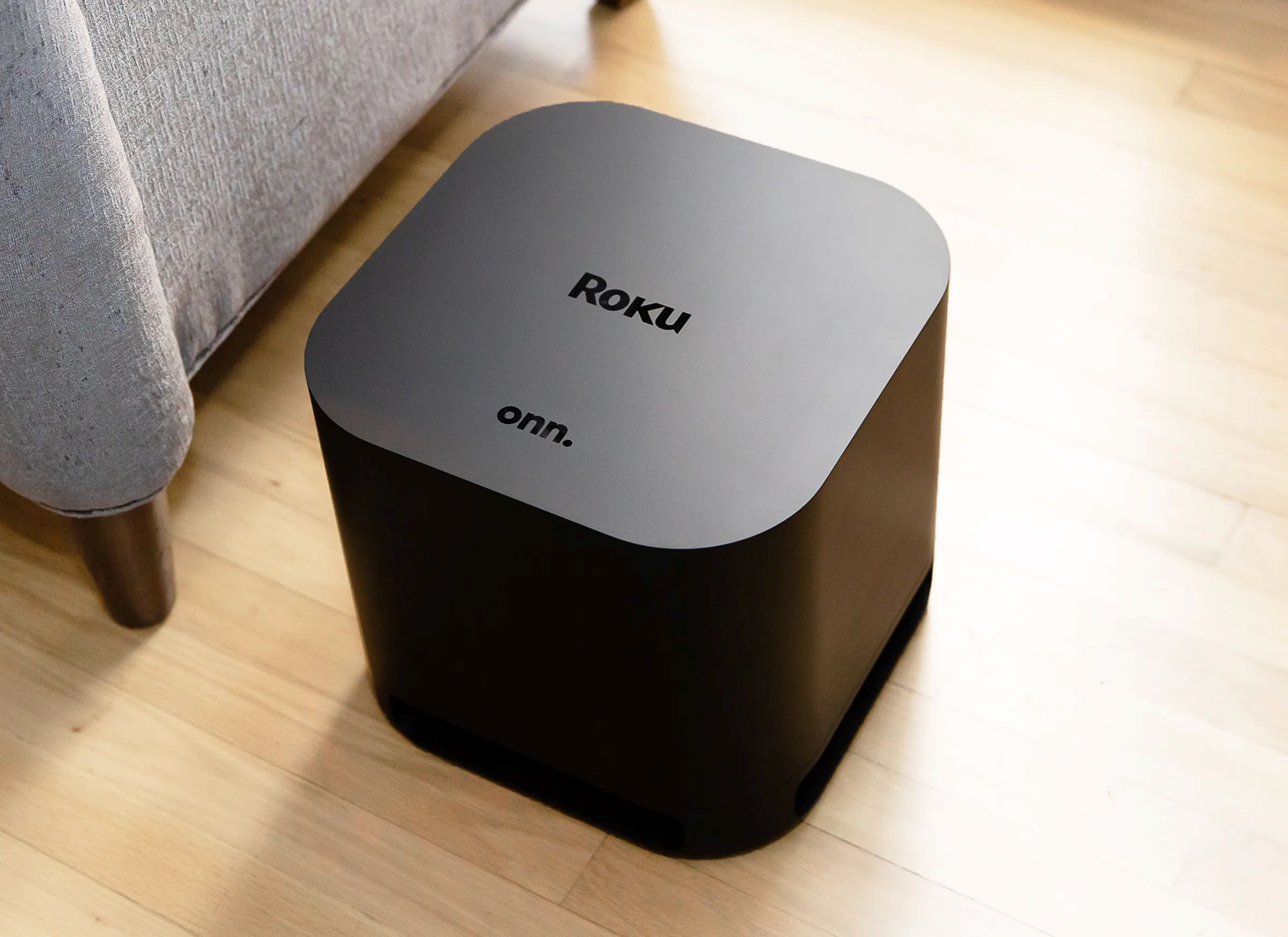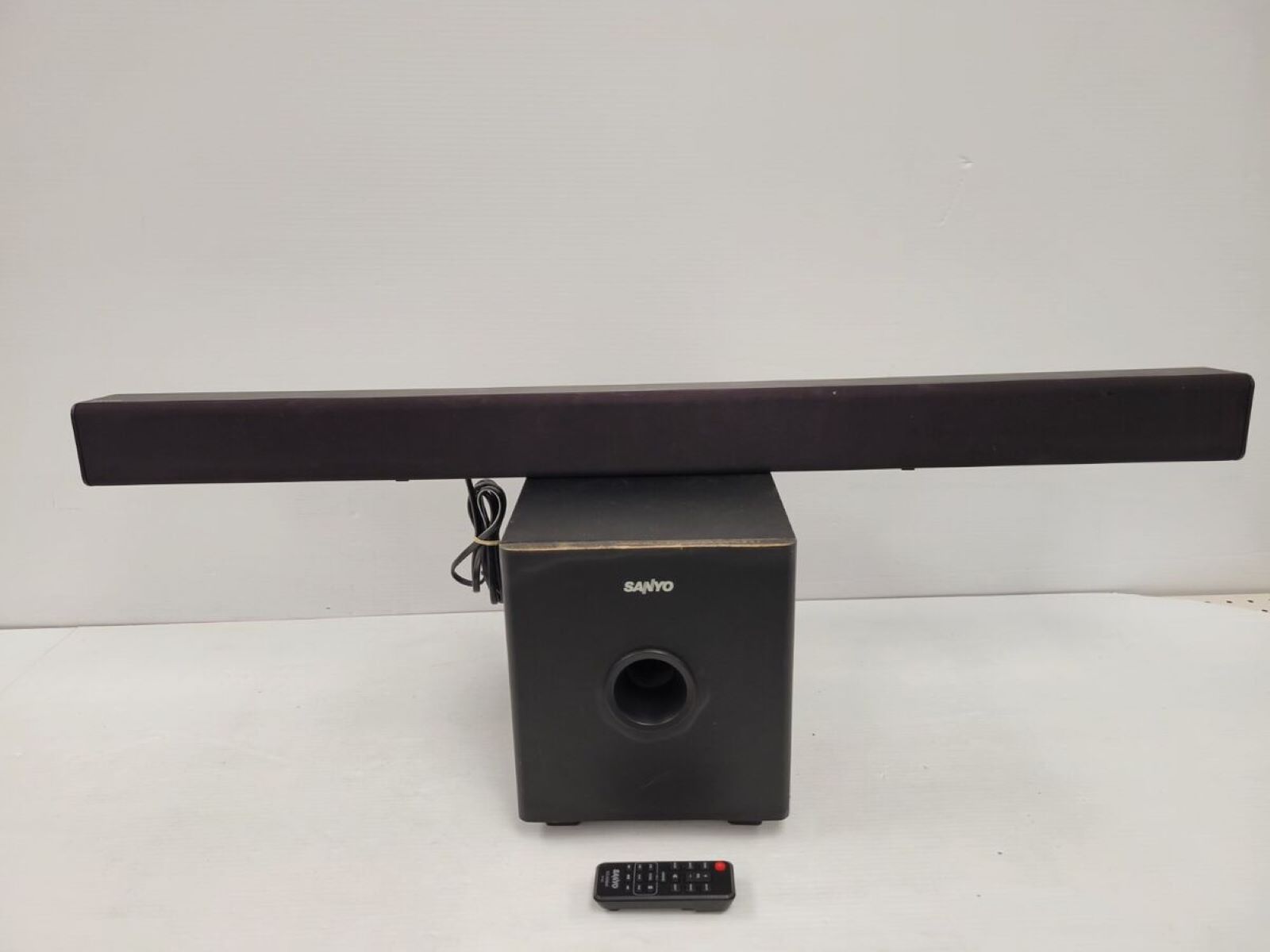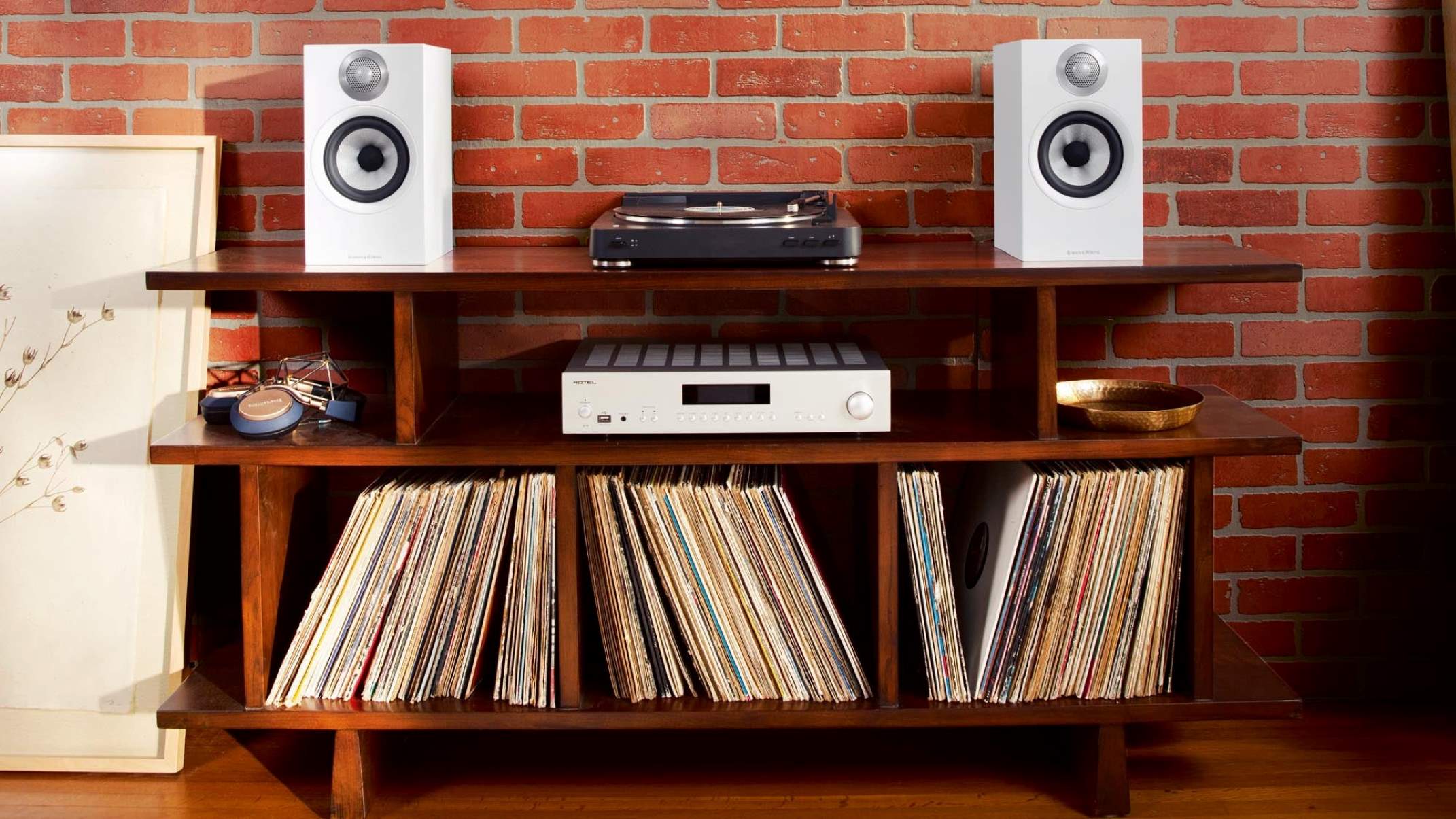Home>Devices & Equipment>Subwoofer>How To Connect A Polk Audio Subwoofer


Subwoofer
How To Connect A Polk Audio Subwoofer
Modified: January 22, 2024
Learn how to easily connect a Polk Audio subwoofer to your audio system. Enhance your audio experience and enjoy deep, powerful bass with this step-by-step guide.
(Many of the links in this article redirect to a specific reviewed product. Your purchase of these products through affiliate links helps to generate commission for AudioLover.com, at no extra cost. Learn more)
Table of Contents
- Introduction
- Step 1: Gather the necessary equipment
- Step 2: Locate the subwoofer input on your audio system
- Step 3: Connect the subwoofer cable to the audio system
- Step 4: Connect the other end of the cable to the subwoofer’s input
- Step 5: Power on the subwoofer and audio system
- Step 6: Adjust the subwoofer settings
- Step 7: Test the subwoofer for proper functioning
- Conclusion
Introduction
Welcome to the world of deep, powerful bass with a Polk Audio subwoofer. Whether you’re a music enthusiast, a movie buff, or a gamer looking to enhance your audio experience, a subwoofer can make a significant difference in the overall sound quality.
Subwoofers are specialized speakers designed to reproduce low-frequency sound, typically below 200Hz. They add depth and impact to audio, allowing you to feel the rumble of explosions, the thumping bass lines of your favorite songs, and the intensity of movie soundtracks. With a Polk Audio subwoofer, you can expect exceptional performance and audio fidelity.
Although the idea of connecting a subwoofer may seem intimidating, it’s actually a straightforward process that can be completed in a few simple steps. Whether you’re setting up a brand new system or adding a subwoofer to an existing audio setup, this guide will walk you through the process of connecting your Polk Audio subwoofer to your audio system.
Before we dive into the steps, let’s take a quick look at the equipment you’ll need:
- A Polk Audio subwoofer
- An audio system (such as a home theater receiver, stereo amplifier, or powered speakers)
- A subwoofer cable
- Audio cables (if necessary for connecting your audio system)
- A power source
Now that you have an idea of what you’ll need, let’s move on to the step-by-step process of connecting your Polk Audio subwoofer!
Step 1: Gather the necessary equipment
Before you begin the process of connecting your Polk Audio subwoofer, it’s important to gather all the necessary equipment. Here’s a quick checklist:
- Polk Audio subwoofer: Make sure you have the subwoofer itself. This is the device that will reproduce the low-frequency sound and provide that deep bass impact.
- Audio system: You’ll need an audio system to connect your subwoofer to. This can be a home theater receiver, a stereo amplifier, or even a set of powered speakers. Ensure that your audio system has the necessary inputs and outputs to accommodate a subwoofer.
- Subwoofer cable: This is the cable that will connect your subwoofer to your audio system. It typically has RCA connectors on both ends, with one end connecting to the subwoofer and the other end connecting to the audio system.
- Audio cables: Depending on your audio setup, you may need additional audio cables to connect your audio system to your source devices, such as a TV, CD player, or streaming device.
- Power source: Ensure that you have a power source nearby, as both your subwoofer and audio system will require power to function.
Once you have gathered all the necessary equipment, you’re ready to move on to the next step: locating the subwoofer input on your audio system.
Step 2: Locate the subwoofer input on your audio system
Before you can connect your Polk Audio subwoofer, you need to identify the subwoofer input on your audio system. This is where you’ll plug in the subwoofer cable to establish the connection. The location of the subwoofer input can vary depending on the type of audio system you have.
If you’re using a home theater receiver, the subwoofer input is usually labeled as “Subwoofer,” “LFE” (Low-Frequency Effects), or sometimes “SW” (Subwoofer). You can refer to your receiver’s user manual or look for these labels on the back panel of the receiver.
If you’re using a stereo amplifier, the subwoofer input can often be found on the back panel labeled as “Subwoofer” or “LFE.” Again, referring to the amplifier’s user manual will provide you with the exact location.
For powered speakers, the process might differ depending on the specific model. Some powered speakers have a dedicated subwoofer output labeled as “Sub Out” or “Subwoofer Out,” while others might use a regular audio output that can be used as the subwoofer input.
Take your time to locate the subwoofer input on your audio system before proceeding to the next step. This will ensure that you make the proper connection and receive optimal bass performance from your Polk Audio subwoofer.
Once you’ve identified the subwoofer input, you’re ready to move on to the next step: connecting the subwoofer cable to your audio system.
Step 3: Connect the subwoofer cable to the audio system
Now that you’ve located the subwoofer input on your audio system, it’s time to connect the subwoofer cable. The subwoofer cable typically has RCA connectors on both ends, making it easy to establish a secure and reliable connection.
Start by taking one end of the subwoofer cable and plugging it into the subwoofer output on your audio system. Ensure that the connectors are securely inserted, making a tight fit to prevent any audio signal loss or interference.
Next, move to the other end of the subwoofer cable and connect it to the subwoofer input on your Polk Audio subwoofer. Again, ensure that the connectors are securely inserted to establish a stable connection.
If your subwoofer or audio system has a “LFE” input specifically designed for low-frequency effects, use this input for optimal performance. However, if your subwoofer only has a regular audio input, or if your audio system doesn’t have a specific subwoofer output, you can still connect the subwoofer cable to a regular audio output.
Additionally, if you’re using a powered subwoofer, make sure to connect the cable to the correct input labeled “Input,” “Line In,” or similar, to ensure the subwoofer functions properly.
Double-check the connections to ensure that the subwoofer cable is securely connected to both the audio system and the subwoofer. A firm, snug fit will help maintain optimal audio quality and prevent any signal loss.
With the subwoofer cable connected, you’re now ready to move on to the next step: connecting the other end of the cable to the subwoofer’s input.
Step 4: Connect the other end of the cable to the subwoofer’s input
With one end of the subwoofer cable securely connected to the audio system, it’s time to connect the other end to the subwoofer’s input. This step will establish the final connection needed for your Polk Audio subwoofer to receive audio signals and reproduce deep, powerful bass.
Locate the subwoofer input on your Polk Audio subwoofer. This is typically labeled as “Input” or “Line In” and may have a corresponding color code to match the RCA connector on the subwoofer cable.
Take the free end of the subwoofer cable and insert the RCA connector into the subwoofer’s input. The connector should be snug and secure. Make sure to match the color-coded connectors for the left and right channels if applicable, ensuring correct signal routing.
If your Polk Audio subwoofer has multiple inputs, such as a stereo or LFE input, choose the appropriate input that corresponds to your audio system and preferred setup.
Once the cable is connected, give it a slight tug to ensure it is firmly attached. A loose connection can lead to audio dropouts or a reduction in bass performance.
Take a moment to step back and verify that all connections are secure and properly inserted. This includes the subwoofer cable at both the audio system and the subwoofer itself.
Great job! You have successfully connected your Polk Audio subwoofer to your audio system. In the next step, we’ll power on the subwoofer and audio system.
Step 5: Power on the subwoofer and audio system
Now that you have completed the physical connections, it’s time to power on both your Polk Audio subwoofer and the audio system. This step is crucial to ensure that both devices receive the necessary power to function properly.
Start by locating the power switch on your subwoofer. It is usually located on the back or side of the subwoofer enclosure. Flip the power switch to the “On” position, and you may also notice a standby mode option, which allows the subwoofer to power on automatically when it detects an audio signal.
Next, locate the power switch on your audio system. This can be found on the front panel or rear of the device, depending on the model. Flip the power switch to the “On” position as well.
Wait for a moment as both devices power up. You may see indicator lights or displays on your subwoofer or audio system, indicating that they are receiving power and are ready to be used.
During this step, it’s important to ensure that all components in your audio setup are receiving power. This includes any connected source devices such as a TV, CD player, or streaming device. Check that all relevant devices are also powered on.
If your Polk Audio subwoofer has additional features like wireless connectivity or app control, now is a good time to follow the manufacturer’s instructions to set up and enable those features.
With the subwoofer and audio system powered on, you’re ready to move on to the next step: adjusting the subwoofer settings to achieve the desired sound.
Step 6: Adjust the subwoofer settings
Now that your Polk Audio subwoofer and audio system are powered on, it’s time to fine-tune the subwoofer settings to achieve the desired sound quality. Adjusting these settings will help you tailor the bass response to match your listening preferences and optimize the overall audio experience.
First, locate the control panel on your subwoofer. This can typically be found on the back or side of the enclosure. The control panel may include various knobs, buttons, or a digital display.
Here are some common subwoofer settings you can adjust:
- Volume: This controls the overall output level of the subwoofer. Start by setting the volume to a moderate level and make fine adjustments later to blend the bass seamlessly with the main speakers.
- Crossover frequency: The crossover frequency determines the point at which the subwoofer starts to produce sound, and the main speakers take over. Adjust the crossover frequency to ensure a smooth transition between the subwoofer and the main speakers.
- Phase: The phase setting helps align the subwoofer’s output with the main speakers. Experiment with the phase switch or knob to find the setting that provides the most coherent and balanced sound.
- Low-pass filter: If your subwoofer has a low-pass filter, adjust it to allow the subwoofer to reproduce only the lowest frequencies. This helps prevent the subwoofer from playing higher frequencies that should be handled by the main speakers.
Make small adjustments to each setting while playing audio material that you are familiar with. This will help you gauge the impact of each adjustment and find the optimal settings for your listening environment.
Keep in mind that the ideal subwoofer settings can vary depending on factors such as room acoustics, speaker placement, and personal preferences. Take your time to experiment and fine-tune the settings until you achieve the desired balance and bass response.
Once you are satisfied with the subwoofer settings, you’re almost ready to enjoy the rich, deep bass from your Polk Audio subwoofer. But before that, let’s move on to the final step: testing the subwoofer for proper functioning.
Step 7: Test the subwoofer for proper functioning
After setting up and adjusting the subwoofer settings, it’s important to test the subwoofer to ensure it is functioning correctly and producing the desired bass output. Testing allows you to verify the connection, confirm that all settings are properly configured, and make any necessary adjustments.
Begin by playing audio content that includes deep bass frequencies. This can be a movie with intense action sequences, a bass-heavy song, or any audio material that showcases low-frequency sounds.
Listen carefully to the sound coming from the subwoofer. Pay attention to the clarity and depth of the bass, as well as any unwanted distortion or rattling. If the bass sounds muddy or unclear, you may need to adjust the volume and settings to achieve the desired balance.
While the subwoofer is playing, walk around the room and listen for any inconsistencies in the bass response. Certain areas of the room may amplify or diminish bass frequencies, so it’s important to ensure an even bass distribution throughout the listening area. If you notice any imbalances, you can experiment with subwoofer and speaker placement to achieve a more uniform bass response.
Additionally, you can perform a quick bass sweep test. These tests generate a range of low-frequency sounds and allow you to identify any peaks or dips in the bass response. There are various bass sweep test tracks available online or on audio calibration discs that can be played through your audio system.
During testing, you may also want to adjust the subwoofer’s volume to match the rest of your audio system. Ideally, the subwoofer should complement the main speakers without overpowering or being too weak in comparison.
While testing, it’s important to trust your ears and make adjustments based on personal preferences. Everyone’s listening environment and preferences are different, so take the time to find the settings that deliver the best audio experience for you.
By thoroughly testing your Polk Audio subwoofer, you can ensure that it is working properly and producing the desired bass response. Enjoy the deep, immersive sound that your subwoofer adds to your music, movies, and games!
Now that you have successfully tested your subwoofer, you are ready to enjoy its powerful bass response. Congratulations on connecting and setting up your Polk Audio subwoofer!
Conclusion
Congratulations on successfully connecting your Polk Audio subwoofer to your audio system! By following the step-by-step process outlined in this guide, you have unlocked the potential for deep, powerful bass that will enhance your audio experience.
From gathering the necessary equipment to adjusting the subwoofer settings and testing its performance, you have learned how to make the most out of your Polk Audio subwoofer. Remember, it’s essential to take the time to fine-tune the settings to suit your preferences and listening environment.
A properly connected and optimized subwoofer can bring your music, movies, and games to life by adding depth, impact, and a rich low-frequency foundation. With a Polk Audio subwoofer, you can expect exceptional performance and audio fidelity that truly immerses you in your favorite content.
Don’t hesitate to continue exploring and experimenting with different audio settings and subwoofer placement to further enhance your audio setup. As you become more familiar with your Polk Audio subwoofer, you’ll gain a deeper understanding of its capabilities and how it can elevate your audio enjoyment.
Remember to always consult the user manual provided by Polk Audio for specific instructions and recommendations tailored to your subwoofer model.
Now, sit back, relax, and immerse yourself in the deep, powerful bass that your Polk Audio subwoofer brings to your audio system. Enjoy the enhanced audio experience, and let the subwoofer deliver the thunderous rumble and heart-pounding excitement that adds a new dimension to your favorite music, movies, and games. Happy listening!

